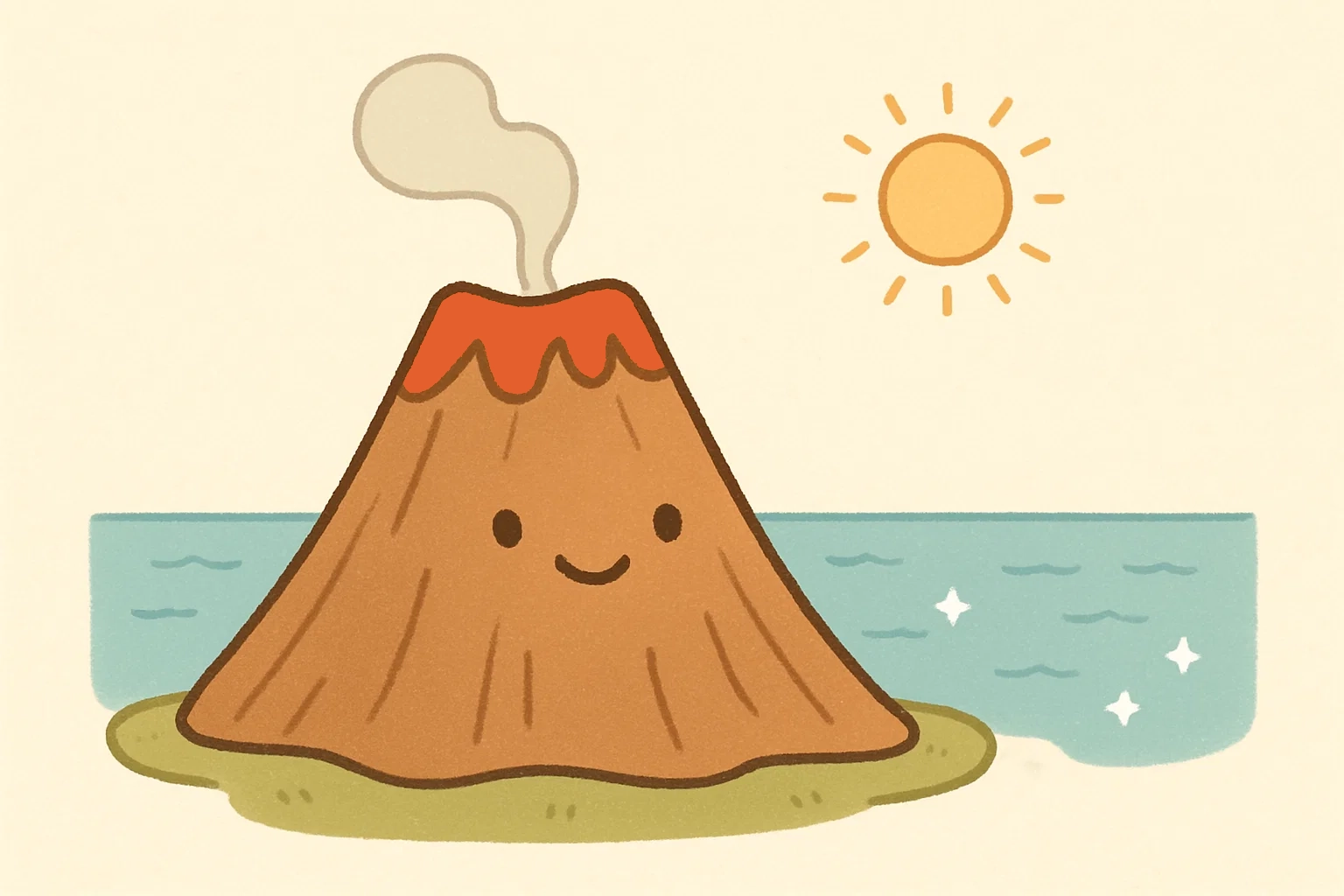Amazing Facts Every Student Must Know

Learning doesn’t have to feel like a chore. When you discover fascinating information about the world around you, education becomes an adventure. This collection of amazing facts will spark curiosity in students of all ages, from toddlers to students in high school, transforming ordinary lessons into extraordinary discoveries.
These fun and educational facts will help make learning an exciting journey rather than a destination.
Unique and Interesting Facts for Students

Every student deserves to know interesting things that expand their understanding of the world. These carefully curated facts cover everything from nature to science, helping spark their curiosity and make subjects that seem difficult become more approachable.
Random Fun Facts
Sometimes the most memorable facts are the ones that surprise us. Here are random fun facts that will entertain and educate:
- Honey never spoils: Archaeologists have discovered 3,000-year-old honey in Egyptian tombs that was still perfectly edible. The unique chemical composition and low moisture content create an environment where bacteria cannot survive.
- The Pacific Ocean is shrinking: While it remains the largest ocean, the Pacific shrinks by about one inch per year due to tectonic plate movements. Meanwhile, the Atlantic Ocean expands.
- Mount Everest grows taller each year: The world’s highest point on Earth increases by approximately 4 millimeters annually because of shifting tectonic plates in the Himalayan region.
- There are more stars than grains of sand: Scientists estimate there are roughly 10 billion trillion stars in the observable universe, far exceeding the estimated 7.5 quintillion grains of sand on all Earth’s beaches.
Weird Fun Facts Explained
Some facts sound too strange to be true, yet they reveal fascinating aspects of our world. Understanding these peculiarities helps kids learn about the complexity of nature and science.
Why bananas are berries but strawberries aren’t: In botanical terms, berries must come from one flower with one ovary and have seeds embedded in the flesh. Bananas fit this definition perfectly, while strawberries develop from a flower with multiple ovaries, making them “aggregate accessory fruits.” This weird fun fact challenges our everyday assumptions about food classification.
Sharks are older than trees: Sharks have existed for approximately 400 million years, while trees appeared around 350 million years ago. This means sharks witnessed the planet before forests covered the land, offering a unique window into evolutionary history.
Flamingos aren’t naturally pink: These iconic birds are born gray. Their distinctive pink color comes from carotenoid pigments in the algae and crustaceans they consume. In captivity, flamingos may lose their color if their diet lacks these compounds.
Unique Facts You Never Heard
Expanding knowledge means discovering information that few people know. These unique facts provide conversation starters and deepen understanding of our world:
- The Mariana Trench is deeper than Mount Everest is tall: Located in the Pacific Ocean, the deepest point reaches 36,201 feet below sea level. If you placed Mount Everest inside, its peak would still be over a mile underwater.
- Octopuses have three hearts: Two pump blood to the gills, while the third circulates blood to the rest of the body. When an octopus swims, the heart supplying the body stops beating, which is why these creatures prefer crawling.
- A day on Venus is longer than its year: Venus takes 243 Earth days to rotate once on its axis, but only 225 Earth days to orbit the Sun. This unusual characteristic results from its extremely slow rotation speed.
Interesting Facts World
Our planet holds countless wonders that demonstrate the diversity and complexity of Earth. These facts about the world help students appreciate global geography and natural phenomena:
| Geographic Wonder | Interesting Fact | Significance |
| Amazon Rainforest | Produces 20% of Earth’s oxygen | Often called “the lungs of the planet” |
| Sahara Desert | Largest hot desert, expanding southward | Covers area similar to entire United States |
| Great Barrier Reef | Visible from space, built by tiny organisms | Largest living structure on Earth |
| Antarctica | Contains 70% of Earth’s fresh water | Driest continent despite being covered in ice |
Mind-Blowing Science Fun Facts

Science reveals the hidden mechanisms that make our world work. These fun facts help students understand complex concepts through accessible examples that spark wonder and encourage deeper investigation.
Facts Human Body
The human body operates like an incredibly complex machine, with systems working together in remarkable ways. Understanding these processes helps every student appreciate their own biology:
Your brain uses 20% of your body’s energy: Despite representing only 2% of body weight, the brain consumes a fifth of your total energy. This high demand reflects the intensive computational work happening constantly, from regulating heartbeat to processing thoughts.
You have the same number of neck bones as a giraffe: Both humans and giraffes have exactly seven cervical vertebrae. The difference lies in the size—each giraffe neck bone can be over 10 inches long.
Your stomach acid could dissolve metal: The hydrochloric acid in your stomach has a pH between 1.5 and 3.5, powerful enough to break down tough proteins and kill harmful bacteria. The stomach lining replaces itself every three to four days to prevent self-digestion.
Water Facts Kids
Water forms the foundation of life on Earth, yet it behaves in unexpected ways that fascinate scientists and students alike:
- Hot water can freeze faster than cold water: Known as the Mpemba effect, this counterintuitive phenomenon occurs under specific conditions. Scientists suggest factors like evaporation, convection currents, and dissolved gases may contribute, though the exact mechanism remains debated.
- Only 1% of Earth’s water is drinkable: While oceans cover 71% of the planet’s surface, 97% of water is saltwater. Of the remaining 3% freshwater, about two-thirds is frozen in ice caps and glaciers.
- Water can exist in three states simultaneously: At a specific temperature and pressure point called the triple point (0.01°C and 611.657 pascals), water can be solid, liquid, and gas at the same time.
Lightning Hotter Sun Fact
Lightning bolts reach temperatures of approximately 53,540°F (30,000°C)—roughly five times hotter than the surface of the Sun, which measures about 10,000°F (5,500°C). This extreme heat occurs because lightning represents a massive electrical discharge that superheats the surrounding air in milliseconds. The rapid expansion of this heated air creates the thunder we hear.
This comparison helps students understand that temperature and total energy are different concepts. While lightning is hotter, the Sun contains vastly more total energy due to its enormous size.
Why Honey Never Spoils
Honey’s eternal shelf life results from four key factors working together:
- Low moisture content: Honey contains only 17-18% water, creating an environment too dry for bacteria and microorganisms to survive.
- Acidic pH: With a pH between 3 and 4.5, honey creates inhospitable conditions for most pathogens.
- Hydrogen peroxide production: Bees add an enzyme called glucose oxidase, which produces small amounts of hydrogen peroxide, a natural antibacterial compound.
- Hygroscopic properties: Honey draws moisture out of bacteria, effectively dehydrating and killing them through osmosis.
These properties explain why archaeologists have found perfectly preserved honey in ancient Egyptian tombs dating back thousands of years.
Bananas Are Berries Strawberries Aren’t
This botanical paradox confuses many students, but it illustrates how scientific classification differs from everyday language. In botanical terms, a berry must meet three criteria:
- Develops from a flower with one ovary
- Contains a soft middle and outer layer
- Has seeds embedded in the flesh
Bananas perfectly fit this definition. Each banana develops from a single flower’s ovary and contains tiny black seeds throughout. Strawberries, however, develop from a flower with multiple ovaries, and their “seeds” (actually called achenes) sit on the outside. This makes strawberries aggregate accessory fruits, not true berries. Surprisingly, tomatoes, grapes, and even watermelons are classified as berries.
Solar System Facts and Space Mysteries

The solar system contains eight planets, five recognized dwarf planets, and countless smaller bodies, all orbiting our Sun. These cosmic wonders provide endless opportunities to make learning exciting for students interested in space exploration.
Planet Facts Exploration
Each planet in our solar system possesses unique characteristics that distinguish it from the others:
Jupiter could swallow 1,300 Earths: As the largest planet, Jupiter’s mass exceeds all other planets combined. Its Great Red Spot is a storm larger than Earth that has raged for at least 350 years.
Saturn’s rings are disappearing: These iconic features are gradually being pulled into the planet by gravity. Scientists estimate they may vanish completely in 100 million years—relatively soon in astronomical terms.
Mars has the solar system’s tallest mountain: Olympus Mons rises 13.6 miles (21.9 kilometers) high, nearly three times taller than Mount Everest. This massive volcano covers an area roughly the size of Arizona.
Facts Sun Moon
Our nearest celestial neighbors influence Earth in profound ways that affect daily life:
The Sun accounts for 99.86% of the solar system’s total mass. This massive ball of hydrogen and helium converts 600 million tons of hydrogen into helium every second through nuclear fusion, releasing the energy that powers life on Earth.
The Moon is slowly drifting away from Earth at approximately 1.5 inches (3.8 centimeters) per year. This gradual separation means that millions of years ago, the Moon appeared much larger in the sky, and Earth’s days were shorter because the Moon’s gravitational influence affects our planet’s rotation.
Stars More Than Grains Sand
This comparison helps students grasp the incomprehensible scale of the universe. Researchers estimate there are approximately:
- 7.5 quintillion grains of sand on all Earth’s beaches and deserts (7,500,000,000,000,000,000)
- 10 billion trillion stars in the observable universe (10,000,000,000,000,000,000,000,000)
That means for every grain of sand on our entire planet, there exist roughly 10,000 stars in space. This staggering ratio demonstrates the vast scale of the cosmos and our relatively tiny place within it.
Day Venus Longer Year Venus Fact
Venus rotates so slowly on its axis that one Venusian day (243 Earth days) actually exceeds one Venusian year (225 Earth days). This unusual situation occurs because Venus spins extremely slowly and in the opposite direction of most planets—a phenomenon called retrograde rotation.
If you stood on Venus (which you couldn’t due to extreme temperatures and crushing atmospheric pressure), you would see the Sun rise in the west and set in the east. The planet’s thick atmosphere creates a runaway greenhouse effect, making surface temperatures reach 900°F (475°C)—hot enough to melt lead.
Amazing Animal Fun Facts
The animal kingdom offers endless examples of adaptation, intelligence, and survival strategies that captivate students and demonstrate evolution’s creativity.
Facts Animals Students
Animals have evolved remarkable abilities that seem almost supernatural:
The fastest land animal can’t maintain its speed: Cheetahs reach speeds of 70 mph but can only sustain this pace for 20-30 seconds before overheating. Their lightweight build and large nasal passages sacrifice endurance for explosive acceleration.
Dolphins have names for each other: Research posted on PNAS indicates dolphins use unique whistle patterns to identify and call specific individuals, demonstrating a level of social complexity previously thought unique to humans and great apes.
Crows can recognize human faces: These intelligent birds remember people who threatened them and can hold grudges for years. They’ve been observed teaching their offspring to recognize specific “dangerous” humans.
Polar Bears Adaptations
Polar bears represent one of nature’s most impressive examples of environmental adaptation. These Arctic predators have evolved multiple features to survive in one of Earth’s harshest climates:
Their fur isn’t actually white: Individual hairs are hollow and transparent, reflecting visible light to appear white. This structure also provides excellent insulation by trapping air. Underneath, polar bears have black skin that helps absorb heat from sunlight.
They can swim continuously for days: Polar bears are classified as marine mammals because they spend so much time in water. They’ve been recorded swimming over 400 miles (644 kilometers) continuously, using their large front paws like paddles.
They overheat easily: Despite living in the Arctic, polar bears can overheat when running or experiencing stress. Their thick insulation, designed for temperatures far below freezing, becomes a liability during physical exertion.
Why Group Flamingo Called Flamboyance
A group of flamingos is called a “flamboyance,” a perfectly fitting term for these dramatically colored birds. The name derives from the French word “flambe,” meaning flame, referencing their vibrant pink and red plumage.
Flamingos are exceptionally social creatures, gathering in colonies that can number in the thousands or even millions. These large groups provide protection from predators and create synchronized breeding behaviors. When flamingos perform their group courtship displays—stretching their necks, calling loudly, and marching in formation—the spectacle truly lives up to the flamboyant description.
Octopus Facts
Octopuses rank among the ocean’s most intelligent and adaptable creatures, possessing abilities that seem almost alien:
- Nine brains control their movements: One central brain coordinates overall behavior, while eight smaller brains—one in each arm—handle local decisions. This distributed intelligence allows each arm to operate semi-independently.
- They can change color in milliseconds: Specialized skin cells called chromatophores, iridophores, and leucophores allow octopuses to match their surroundings with incredible precision for camouflage or communication.
- Most species live only 1-2 years: Despite their intelligence, octopuses have surprisingly short lifespans. After mating, females stop eating and die shortly after their eggs hatch.
- They can squeeze through any opening larger than their beak: Octopuses lack bones except for a hard parrot-like beak. This allows them to compress their bodies and escape through incredibly small spaces.
Jellyfish Facts
Jellyfish have drifted through Earth’s oceans for over 500 million years, predating dinosaurs, sharks, and most other complex life forms:
Jellyfish have no brain, heart, or bones: These simple creatures consist of approximately 95% water. They rely on a basic nerve net to detect light, odor, and other stimuli, coordinating their pulsing swimming motion.
Some species are immortal: The Turritopsis dohrnii, known as the “immortal jellyfish,” can revert to its juvenile polyp stage after reaching maturity, potentially cycling through this process indefinitely. Scientists study this species to understand cellular regeneration.
Box jellyfish have 24 eyes: Despite lacking a central brain, these jellyfish possess four clusters of six eyes each, allowing them to navigate complex environments and actively hunt prey rather than drift passively.
Dinosaur Facts Students Love

Dinosaurs dominated Earth for approximately 165 million years before their extinction 66 million years ago. These prehistoric creatures continue to fascinate students and inspire scientific inquiry.
T-Rex Facts
Tyrannosaurus rex remains the most recognizable dinosaur, though recent research has revised many common assumptions:
T-Rex had the strongest bite of any land animal ever: Studies estimate bite forces up to 12,800 pounds (57,000 Newtons)—enough to crush a car. This crushing power allowed T-Rex to break bones and access nutritious marrow inside.
Its tiny arms could lift 400 pounds: While comically small compared to its massive body, T-Rex arms were far from useless. Each arm contained powerful muscles capable of lifting several hundred pounds, possibly used to grip prey or help the dinosaur stand up.
T-Rex couldn’t actually run: Recent biomechanical analysis suggests adult T-Rex moved at speeds of 12-18 mph—a brisk walk or slow jog by human standards. Running would have generated forces that could break the dinosaur’s leg bones.
They may have had feathers: Growing evidence suggests T-Rex and related tyrannosaurs possessed primitive feathers, particularly as juveniles. This finding challenges the scaly-skinned depiction common in older media.
Velociraptor Facts
Hollywood’s portrayal of velociraptors differs dramatically from their actual appearance and behavior:
Real velociraptors were turkey-sized: The intimidating creatures from popular films were actually based on Deinonychus, a larger relative. True velociraptors stood about 1.6 feet (0.5 meters) tall at the hip and weighed roughly 15-33 pounds (7-15 kilograms).
They definitely had feathers: Fossil evidence clearly shows velociraptor had well-developed feathers on its arms and tail, similar to modern birds. However, they couldn’t fly—these feathers likely served for display, insulation, or protecting eggs.
They hunted in packs: Fossil discoveries of multiple velociraptors near single prey animals suggest coordinated hunting behavior, making them more dangerous than their size alone would indicate.
Jurassic Period Facts
The Jurassic Period lasted from approximately 201 to 145 million years ago, representing the middle era of dinosaur dominance:
- The largest dinosaur ever discovered lived during the Jurassic: Argentinosaurs may have reached lengths of 115 feet (35 meters) and weighed up to 100 tons—as much as 17 African elephants.
- The first birds appeared: Archaeopteryx, discovered in Jurassic sediments, shows the evolutionary transition between dinosaurs and modern birds, possessing both feathers and teeth.
- Pangaea was breaking apart: During the Jurassic, the supercontinent Pangaea began splitting into separate landmasses, influencing climate, ocean currents, and dinosaur distribution patterns.
Earth Natural Amazing Facts

Our planet demonstrates dynamic processes that have shaped life for billions of years, creating diverse environments from deep ocean trenches to towering mountain peaks.
Ocean Facts Kids
Oceans cover 71% of Earth’s surface and contain 97% of the planet’s water, yet humans have explored less than 5% of these underwater realms:
The Pacific Ocean contains more than 25,000 islands: This vast body of water holds more islands than all other oceans combined. Despite this abundance, the Pacific’s total area is so large that it could contain all Earth’s continents with room to spare.
Ocean currents act like a global conveyor belt: The thermohaline circulation system moves water around the globe based on temperature and salinity differences. This “ocean conveyor belt” takes approximately 1,000 years to complete one full cycle, distributing heat and nutrients worldwide.
More people have traveled to space than to the deepest ocean: The Mariana Trench’s extreme pressure—over 1,000 times atmospheric pressure at sea level—makes deep ocean exploration extraordinarily challenging. Only three people have reached Challenger Deep, the deepest known point.
Hurricane Facts Kids
Hurricanes represent Earth’s most powerful storms, demonstrating the tremendous energy within weather systems:
Hurricanes release energy equivalent to 10,000 nuclear bombs: A typical hurricane expends energy at a rate of 600 terawatts—about 200 times worldwide electrical generating capacity. Most of this energy comes from water vapor condensation.
The eye of a hurricane is calm: In the storm’s center, winds are light and skies may be clear. This deceptive calm results from the storm’s structure—the violent eyewall surrounds the peaceful center.
Hurricanes rotate differently depending on hemisphere: In the Northern Hemisphere, hurricanes spin counterclockwise due to the Coriolis effect. In the Southern Hemisphere, they rotate clockwise. Hurricanes cannot form at the equator because the Coriolis effect is zero there.
Volcano Facts Kids
Volcanoes provide visible evidence of Earth’s molten interior and the powerful forces shaping our planet:
About 1,500 volcanoes are potentially active today: These volcanoes could erupt in the future, though not all are currently showing activity. Most occur along tectonic plate boundaries, particularly the “Ring of Fire” circling the Pacific Ocean.
Volcanic eruptions can cool the planet: Large eruptions inject sulfur dioxide into the stratosphere, where it forms tiny particles that reflect sunlight. The 1991 Mount Pinatubo eruption cooled global temperatures by about 0.5°C (0.9°F) for two years.
Volcanoes create new land: The Hawaiian Islands formed entirely from volcanic eruptions. The island of Hawaii grows larger each year as Kilauea continues adding new land through lava flows reaching the ocean.
History Fun Facts
History contains countless fascinating stories that bring the past to life, helping students understand how previous events shaped our modern world.
Shortest War History
The Anglo-Zanzibar War of 1896 holds the record as the shortest war in history, lasting between 38 and 45 minutes. The conflict began when Sultan Khalid bin Barghash seized power in Zanzibar (now part of Tanzania) following the death of the pro-British Sultan Hamad bin Thuwaini.
Britain, which held significant influence over the region, demanded Khalid step down. When he refused and barricaded himself in the palace with approximately 2,800 defenders, British ships in the harbor opened fire at 9:02 AM on August 27, 1896. The British bombardment quickly destroyed the palace’s defenses, and Khalid fled to the German consulate for asylum. By 9:40 AM, the war was over, with Zanzibar suffering about 500 casualties compared to one British sailor injured.
Historical Figures Events
History’s most influential people often led lives far more complex than simplified textbook accounts suggest:
Cleopatra lived closer to the Moon landing than to the building of the Great Pyramid: Cleopatra ruled Egypt from 51-30 BCE, while the Great Pyramid was completed around 2560 BCE. This means approximately 2,530 years separated Cleopatra from the pyramids, but only 2,000 years separate us from her—a reminder of Egypt’s incredibly long history.
Napoleon wasn’t actually short: Historical records indicate Napoleon stood about 5’7″ (170 cm), average height for Frenchmen of his era. The misconception arose from differences between French and British measurement systems and from British propaganda portraying him as diminutive.
Albert Einstein was offered the presidency of Israel: In 1952, after Israel’s first president died, Prime Minister David Ben-Gurion offered Einstein the position. The physicist declined, stating he lacked “the natural aptitude and the experience to deal properly with people.”
Ancient Civilizations Facts
Ancient societies developed sophisticated technologies and social structures that challenge assumptions about primitive peoples:
The ancient Egyptians used a 365-day calendar: Developed around 3,000 BCE, their calendar divided the year into 12 months of 30 days, plus five additional days. This system, based on agricultural cycles and astronomical observations, closely resembles our modern calendar.
Ancient Romans had concrete that was stronger than modern concrete: Roman maritime concrete, used in harbors and seaside structures, actually grows stronger over time through chemical reactions with seawater. Modern scientists study this 2,000-year-old technology to create more durable contemporary materials.
The Library of Alexandria may have contained 400,000 scrolls: This ancient world’s greatest collection of knowledge housed works on mathematics, astronomy, medicine, and philosophy. Its destruction—likely through several incidents rather than one dramatic fire—represents one of history’s greatest losses of accumulated knowledge.
